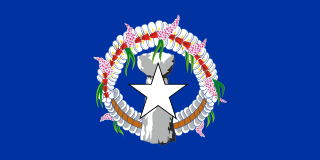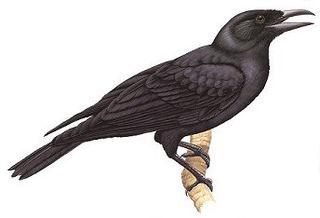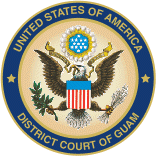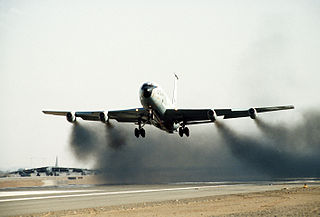
Guam is an organized, unincorporated territory of the United States in Micronesia in the western Pacific Ocean. It is the westernmost point and territory of the United States, along with the Northern Mariana Islands. The capital city of Guam is Hagåtña and the most populous city is Dededo. Guam has been a member of the Pacific Community since 1983. The inhabitants of Guam are called Guamanians, and they are American citizens by birth. The indigenous Guamanians are the Chamorros, who are related to other Austronesian peoples of Indonesia, the Philippines, and Taiwan.
The history of Guam involves phases including the early arrival of Austronesian people known today as the Chamorros around 2000 BC, the development of "pre-contact" society, Spanish colonization in the 17th century and the present American rule of the island since the 1898 Spanish–American War. Guam's history of colonialism is the longest among the Pacific islands.
Guam is a presidential representative democracy, whereby the Governor is head of government, and of a multi-party system. Guam is an organized, unincorporated territory of the United States with policy relations between Guam and the US under the jurisdiction of the Office of Insular Affairs.

The Northern Mariana Islands, officially the Commonwealth of the Northern Mariana Islands, is an insular area and commonwealth of the United States consisting of 14 islands in the northwestern Pacific Ocean. The CNMI includes the 14 northernmost islands in the Mariana Archipelago; the southernmost island, Guam, is a separate U.S. territory. The CNMI and Guam are the westernmost territories of the United States.

Territories of the United States are sub-national administrative divisions overseen by the United States government. The various U.S. territories differ from the U.S. states and Native American tribes in that they are not sovereign entities. They are classified by incorporation and whether they have an "organized" government through an organic act passed by Congress. All U.S. territories are part of the United States, but the unincorporated territories are not considered to be integral parts of the United States, and the Constitution of the United States applies only partially in those territories.
Ricardo Jerome "Ricky" Bordallo was a Guamanian politician, businessman, and member of the Democratic Party of Guam. He served as Governor of Guam from 1975 to 1979 and again from 1983 to 1987.

The Republican Party of Guam, commonly referred to as Guam GOP, is a political party in Guam affiliated with the United States Republican Party.

The Democratic Party of Guam is a political party in Guam affiliated with the U.S. Democratic Party. Its origins lie in the Popular Party, which was the only political party on Guam until 1956.

The 1976 Pacific typhoon season has no official bounds; it ran year-round in 1976, but most tropical cyclones tend to form in the northwestern Pacific Ocean between June and December. These dates conventionally delimit the period of each year when most tropical cyclones form in the northwestern Pacific Ocean.

Typhoon Fran, known in the Philippines as Typhoon Reming, produced tremendous rainfall in Japan including, at the time, a national 24-hour record accumulation of 1,140 mm (44.8 in). Forming as a tropical depression on September 3 to the southeast of Guam, Fran steadily intensified as it moved along a general northwest track. After brushing Guam two days later, the system achieved typhoon status on September 6 after the formation of an eye. A period of explosive intensification ensued thereafter and Fran reached its peak as a Category 4-equivalent typhoon with winds of 240 km/h (150 mph) the following day. Gradual weakening began on September 8 as it neared the Ryukyu Islands, and the system subsequently meandered near the islands for two days before striking Kyushu on September 12. It then moved over the Sea of Japan where it transitioned into an extratropical cyclone and ultimately dissipated on September 16.
Docomo Pacific is a wholly owned subsidiary of Japanese mobile phone operator NTT Docomo headquartered in Tamuning, Guam. It is the largest provider of mobile, television, internet and telephone services to the United States territories of Guam and the Northern Mariana Islands.

The Mariana crow is a species of the crow family from the South Pacific. It is a glossy black bird about 15 inches (38 cm) long and known only from the islands of Guam and Rota.

The District Court of Guam is a United States territorial court with jurisdiction over the United States territory of Guam. It sits in the capital, Hagåtña. Appeals of the court's decisions are taken to the United States Court of Appeals for the Ninth Circuit. It is not an Article III court, and therefore its judges do not have life tenure.

The 916th Air Refueling Squadron is an inactive United States Air Force unit. It was last assigned to the 307th Air Refueling Group at Travis Air Force Base, California, where it was inactivated on 31 October 1983.

Edward Jerome Baza Calvo is an American Guamanian politician, serving as the eighth Governor of the United States territory of Guam from 2011 to 2019. A member of the Republican Party, Calvo was a five-term Senator within the Legislature of Guam. He became the Governor of Guam, having defeated Democrat Carl Gutierrez in the 2010 gubernatorial election. Calvo chose Senator Ray Tenorio as his running mate for Lieutenant Governor of Guam.

Merizo, is the southernmost village in the United States territory of Guam. Cocos Island is a part of the municipality. The village's population has decreased since the island's 2000 census.

Typhoon Pamela was a powerful typhoon that struck the U.S. territory of Guam in May 1976, causing about $500 million in damage (USD). The sixth named storm and third typhoon of the 1976 Pacific typhoon season, Pamela developed on May 14 from a trough in the Federated States of Micronesia in the area of the Nomoi Islands. It executed a counterclockwise loop and slowly intensified, bringing heavy rains to the islands in the region. Ten people died on Chuuk due to a landslide. After beginning a steady northwest motion toward Guam, Pamela attained its peak winds of 240 km/h (150 mph).
A referendum on the territory's status was held in Guam on 30 January 1982. Although the option of becoming a US commonwealth received the most votes, it did not achieve a majority. As a result, a second referendum was held in September with only two options.
A referendum on the territory's status was held in Guam on 4 September 1982. It was held after a referendum in January had resulted in none of the options presented to voters receiving a majority in favour. This time only two options, becoming a US commonwealth or a US state, were offered to voters, with 73% voting in favour of the former. However, the territory has still not achieved commonwealth status.

A referendum on becoming a US commonwealth was held in the Northern Mariana Islands on 17 June 1975. The proposal was approved by 79% of voters. As a result, the United States Congress approved the change of status on 24 March 1976.














